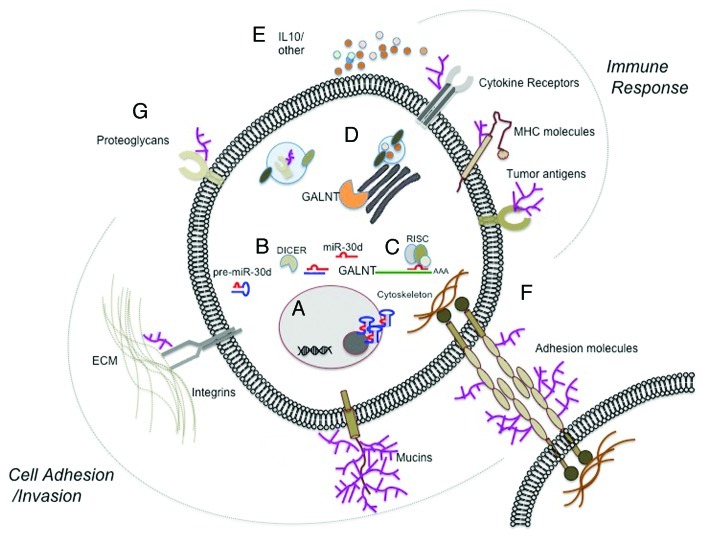Figure 1. miR-30d overexpression and its targeting of UDP-GalNAc Transferases (GALNTs) lead to increased cell invasion and immunosuppression possibly by altering glycosylation patterns. Below are the sequential steps of this process: (A) Pre-miR30d is transcribed and processed in the nucleus and is transported to the cytoplasm. (B) pre-miR-30d is further processed by DICER and the mature form (miR-30d) is loaded into the RISC complex. (C) miR-30d suppresses GALNT translation and targets its mRNA for degradation. (D) GALNT levels in the Golgi are reduced and potentially lead to aberrant glycosylation of substrates and/or disrupted exocytosis of proteins and other membrane-bound proteoglycans. (E–G) Aberrant glycosylation may then affect both, the immune response (E) and the cellular interactions with the ECM or neighboring cells (F), thus cooperating for tumor progression. Additional effects on other receptors may lead to other metastasis-promoting processes (G).

An official website of the United States government
Here's how you know
Official websites use .gov
A
.gov website belongs to an official
government organization in the United States.
Secure .gov websites use HTTPS
A lock (
) or https:// means you've safely
connected to the .gov website. Share sensitive
information only on official, secure websites.
